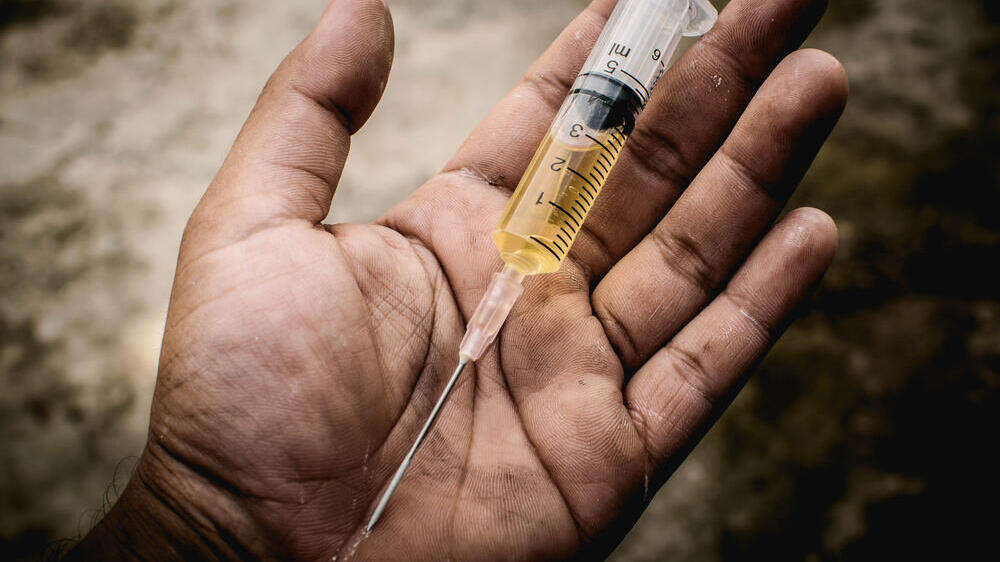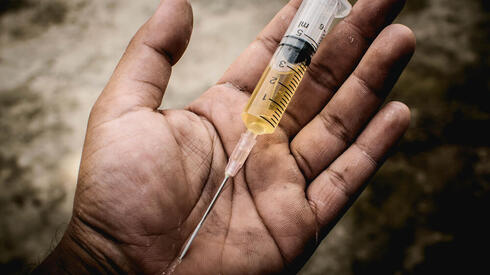According to a new report by the Knesset’s Research and Information Center, an Australian evaluation showed that the center established there reduced overdose deaths and harm, and significantly slowed the spread of infectious diseases.
2 View gallery


Drug injection facilities reduce overdose deaths
(Photo: Shutterstock)
As of 2023, more than 140 supervised injection sites were active in 11 European countries, as well as in Australia, Canada, Mexico and the United States, states the report commissioned by Yesh Atid MK Meirav Cohen.
In Israel, however, there is not a single supervised injection site. In recent years, experts have been pressing the Health Ministry to move forward. The ministry told Ynet that professional teams had held discussions with other relevant government agencies to explore operational, legal and logistical hurdles. The current review focuses on launching a targeted pilot in the Tel Aviv metropolitan area, home to many people in extreme addiction, together with the Welfare Ministry and the Authority for Community Safety.
“We feel we’re at the final hurdle,” said Amit Tzur, a social worker and professional director at the homeless assistance NGO Migrash Beiti (Home Base). “I believe there’s willingness at the ministry, but still no concrete action. We’re waiting for them to meet with us and for top officials to understand the critical need for such a center. This is professional work just waiting for the day the Health Ministry says, ‘We want this.’”
Tzur is working with other advocates, including attorney Amit Deutscher, a law doctoral candidate at the University of Haifa; Shlomi Revivo, national director of the inter-ministerial Yizhar harm-reduction program; and Dr. Hagit Boni-Nach of Ariel University, a research fellow at the Israeli Center on Addiction and Mental Health.
Supervised consumption rooms are part of a “harm reduction” approach—aimed not at eradicating drug use, but at reducing its health and social harms. They provide a clean, safe environment where drug users can consume substances they obtained elsewhere, under the watch of trained health professionals.
2 View gallery


The goals include reducing overdose deaths, limiting the spread of blood-borne diseases like HIV and hepatitis C, increasing access to health and welfare services and cutting down on public drug use.
“The idea is to allow people with severe addictions to use drugs safely in a defined space, and not in full public view,” Tzur explained. Unlike rehab centers, these facilities have no abstinence requirement and tailor services to a person’s immediate mental state. “If I make quitting the first step, 90% of those with addictions will never receive any care at all,” she said.
The Knesset report reviewed programs in Canada, Victoria (Australia), Ireland, Scotland and Rhode Island (United States). As of May 2025, Canada had 30 facilities, some of which offered on-site drug testing for dangerous substances.
In Victoria, a center opened in 2023 under legislation. An evaluation found it met its main goal: between June 2018 and the report’s publication, there were 5,907 overdose incidents at the site and zero deaths. The center also reduced the spread of blood-borne diseases and improved access to health, social and welfare services. Ambulance calls requiring naloxone for overdoses dropped 44% in the area.
However, it only partially met targets for reducing discarded syringes in public spaces and failed to improve local residents’ and businesses’ quality of life. The evaluators recommended improving the model, but the government decided against another pilot in the city for now.
Ireland, Scotland and Rhode Island are running single-site pilots with ongoing evaluations. In Rhode Island, much of the funding comes from legal settlements with pharmaceutical companies over the opioid crisis. In all countries reviewed, centers are generally for people over 18 (Canada has no age limit) and must meet strict government requirements: no sale or provision of drugs on-site, mandatory security presence, cooperation with police and compliance with health regulations. Services often include addiction treatment, mental health care, housing and employment assistance and legal aid.
The Yizhar program has provided clean syringes at five locations nationwide for nearly two decades, but without supervised consumption facilities. Tzur agrees with the Health Ministry that Tel Aviv should host the first center: “It’s the worst hotspot, attracting homeless people from across the country,” she said. The city has an “open drug scene” that harms both users and residents.
 Amit Tzur
Amit Tzur
The envisioned facility would operate during daytime hours, when families, workers and businesses are most affected. Tzur sees it as more than just a medical service: “The opposite of addiction isn’t just sobriety; it’s human connection. A person can be completely clean and still live like an addict if they have no meaningful relationships.”
At Mifgash Beiti, homeless outreach includes soccer classes and a women’s choir. “It might sound strange—‘they have no roof over their heads, so why sing?’—but they come because they want to be seen as human beings. That gives them belonging and meaning, which is the foundation for all of us. That’s the spirit behind this center,” she said.
Tzur stresses that drug users themselves want this. “In my thesis on the injection experience of men addicted to injectable drugs, all 15 interviewees told me, with tears in their eyes, that they deeply regretted ever injecting in front of children or strangers. It’s traumatic for both sides.”
“Every day without such a center costs lives,” she concluded. “Homeless addicts, the group most harmed by the lack of this facility, can lose consciousness and even die, especially during the heat of August. This is preventable.”
